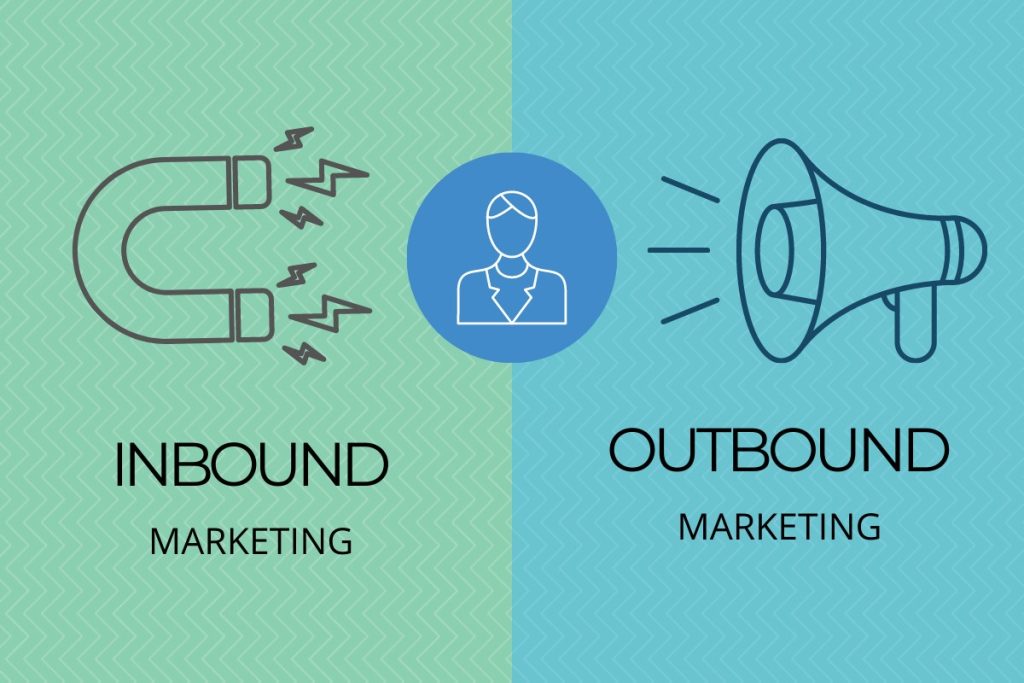
Defining Inbound Marketing: Attracting Customers Through Value
Inbound marketing focuses on attracting customers by offering valuable content and creating meaningful experiences. Instead of pushing messages to a broad audience, inbound marketing draws customers in by addressing their needs. This approach creates content that resonates with target audiences, such as blog posts, videos, podcasts, and social media updates. The goal is to build trust and establish long-term relationships with the audience.
In Inbound vs. Outbound Marketing, inbound marketing stands out for being more customer-centric. It emphasizes delivering value and solutions rather than directly promoting products. Businesses attract people organically, allowing customers to find them through search engines or social media. This method creates a personalized, less intrusive experience, leading to better engagement and higher conversions.
Inbound marketing encourages two-way interaction, where customers engage with content, ask questions, and build relationships. By offering valuable content consistently, businesses can position themselves as thought leaders and earn trust. Overall, inbound marketing helps create a loyal audience and drives long-term growth by delivering value throughout the customer journey.
Understanding Outbound Marketing: Reaching Customers Through Traditional Methods
Outbound marketing is a traditional approach to reaching customers by broadcasting messages to a broad audience. It pushes information about products or services to consumers, regardless of their prior interest. Common outbound marketing methods include TV ads, radio spots, cold calling, direct mail, and print advertising. These strategies aim to generate leads by placing marketing messages in front of many people.
In the Inbound vs. Outbound Marketing debate, outbound marketing is often seen as more interruptive. For example, TV ads or cold calls reach consumers who aren’t actively searching for products. This creates a one-way communication channel where businesses control the message and timing. Although this can create immediate brand awareness, it may not result in long-term engagement. Often, the audience has no prior relationship with the brand.
Despite being traditional, outbound marketing is still effective, especially for quickly promoting new products. It helps businesses expand their reach and increase visibility quickly, making an immediate impact. However, outbound marketing often requires a larger budget and may not build the same level of engagement as inbound methods. Understanding the strengths and limitations of outbound strategies helps businesses use them effectively alongside inbound efforts.
Key Differences Between Inbound and Outbound Marketing
The key differences between Inbound vs. Outbound Marketing strategies lie in how each approaches customers, their costs, and their long-term impact. Inbound marketing focuses on attracting customers by creating valuable content and building trust over time. It emphasizes a customer-centric approach, where potential buyers discover a brand organically through blog posts, social media, or search engines. In contrast, outbound marketing involves pushing messages directly to customers through traditional methods like TV ads, cold calls, and direct mail, often without prior engagement.
When it comes to cost, outbound marketing typically requires a larger budget due to the high cost of advertisements and broad reach campaigns. Running TV commercials or sending mass mailers can be expensive, especially when trying to capture the attention of a large audience. Inbound marketing, on the other hand, tends to be more cost-effective. While it requires an investment in content creation, SEO, and social media management, inbound strategies often generate long-term returns with lower upfront costs. Over time, inbound marketing can attract a steady flow of leads without the need for constant paid advertising.
In terms of long-term impact, inbound marketing builds lasting relationships with customers through consistent engagement and value. This method fosters trust and encourages loyalty, often resulting in higher-quality leads and longer-term customer retention. Outbound marketing, while effective in generating immediate visibility, can struggle to maintain long-term engagement because it doesn’t create the same deep connection with consumers. Ultimately, in the Inbound vs. Outbound Marketing debate, inbound focuses on sustainable growth and customer relationships, while outbound tends to prioritize short-term results and brand awareness.
Benefits of Inbound Marketing: Building Trust and Engagement
Inbound marketing offers significant benefits, particularly in building trust and engagement with customers. Unlike traditional advertising, inbound marketing focuses on creating valuable content that educates, informs, and solves problems for the target audience. This approach positions a brand as an authority in its field, fostering trust between the business and its potential customers. When customers feel that a company understands their needs and provides useful solutions, they are more likely to engage with the brand and develop a lasting relationship.
In the Inbound vs. Outbound Marketing debate, inbound marketing excels in nurturing relationships over time. Through consistent content such as blog posts, podcasts, videos, and newsletters, businesses can keep their audience engaged while providing ongoing value. This continuous engagement builds a rapport that encourages customers to return for more information, leading to higher levels of brand loyalty. Instead of pushing sales messages, inbound marketing invites potential customers to explore content at their own pace, which creates a more positive and less intrusive customer experience.
Another major benefit of inbound marketing is its ability to create lasting customer engagement. By addressing customer pain points through educational content, businesses not only attract leads but also keep them interested throughout the buyer’s journey. This long-term engagement results in more qualified leads, as potential customers are more informed and ready to make purchasing decisions. Overall, inbound marketing’s focus on building trust and fostering relationships makes it an effective strategy for sustainable growth, offering a strong contrast to the immediate but less personal approach of outbound marketing.
When to Use Outbound Marketing: Driving Quick Results and Expanding Reach
Outbound marketing can be particularly effective when businesses need to drive quick results or expand their reach to a broad audience. Unlike inbound marketing, which focuses on attracting leads over time, outbound strategies can deliver immediate visibility. For example, when a company is launching a new product or service, outbound marketing techniques like TV ads, email blasts, or direct mail can quickly generate buzz and increase awareness. These methods allow businesses to reach a wide audience in a short period, making them ideal for time-sensitive campaigns.
In the Inbound vs. Outbound Marketing comparison, outbound marketing is also useful for reaching untapped or broad audiences who may not be actively searching for a product. Cold calling, billboards, or print ads can introduce a brand to new markets or demographic groups that might not yet be familiar with the business. This proactive approach helps businesses expand their customer base beyond those already engaged through inbound tactics. For businesses seeking immediate market penetration or visibility in a new region, outbound marketing can be a powerful tool.
However, it’s important to note that outbound marketing is most effective when used strategically. While it offers quick exposure, it can be more costly than inbound efforts and may not foster the same long-term engagement. Businesses should consider using outbound marketing for short-term objectives, such as product launches or reaching untapped segments, while complementing it with inbound strategies for sustained growth. Together, the two approaches create a balanced marketing plan that can deliver both immediate results and lasting customer relationships.
Conclusion
In conclusion, understanding the strengths and differences in Inbound vs. Outbound Marketing is essential for creating a well-rounded marketing strategy. Inbound marketing builds trust and long-term customer relationships through valuable content, while outbound marketing drives quick results and broad reach. Both approaches have their advantages, depending on business goals, budgets, and audience needs. By using a combination of both, businesses can expand their reach, foster engagement, and achieve sustainable growth. Ultimately, balancing inbound and outbound marketing leads to more effective and impactful campaigns.

